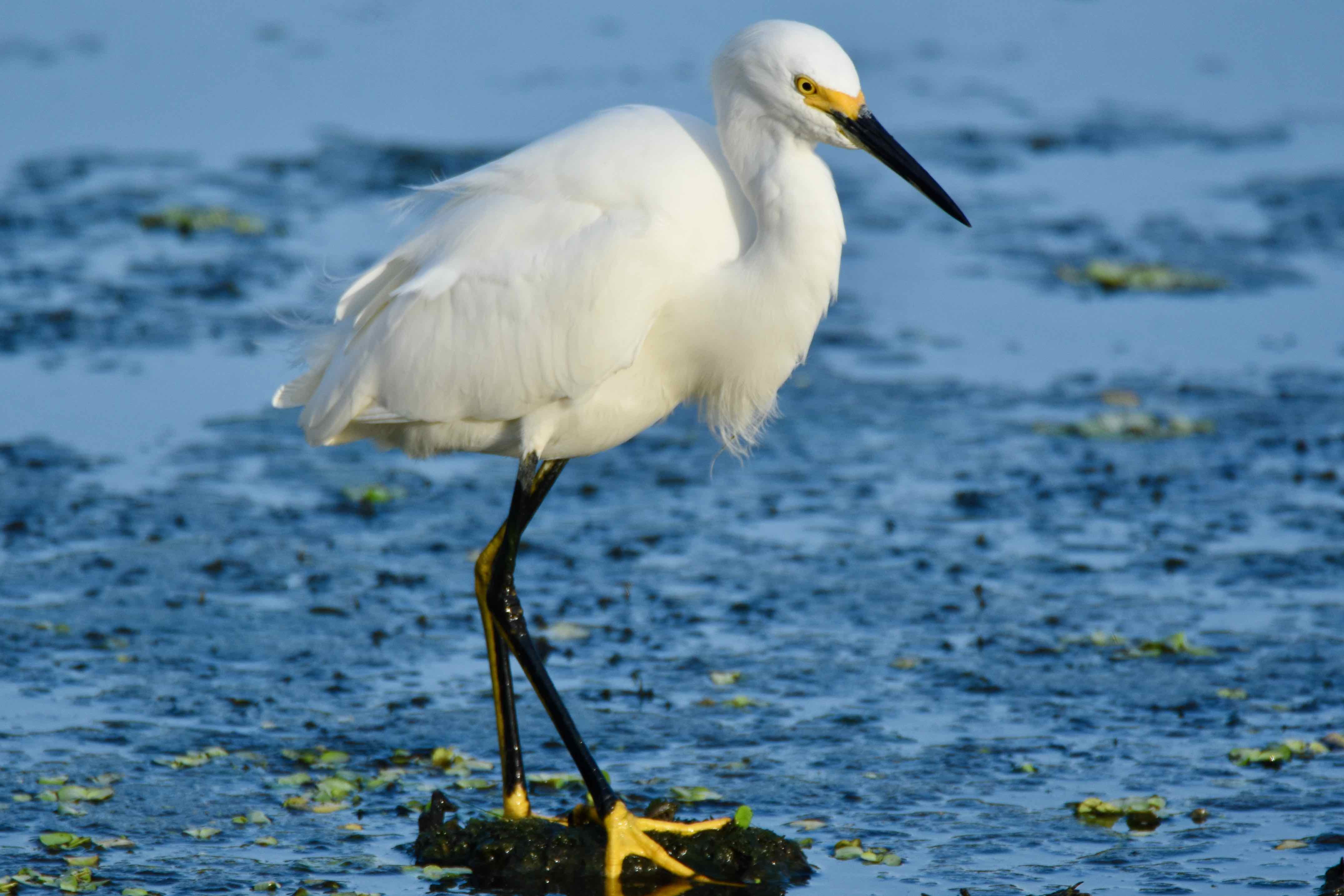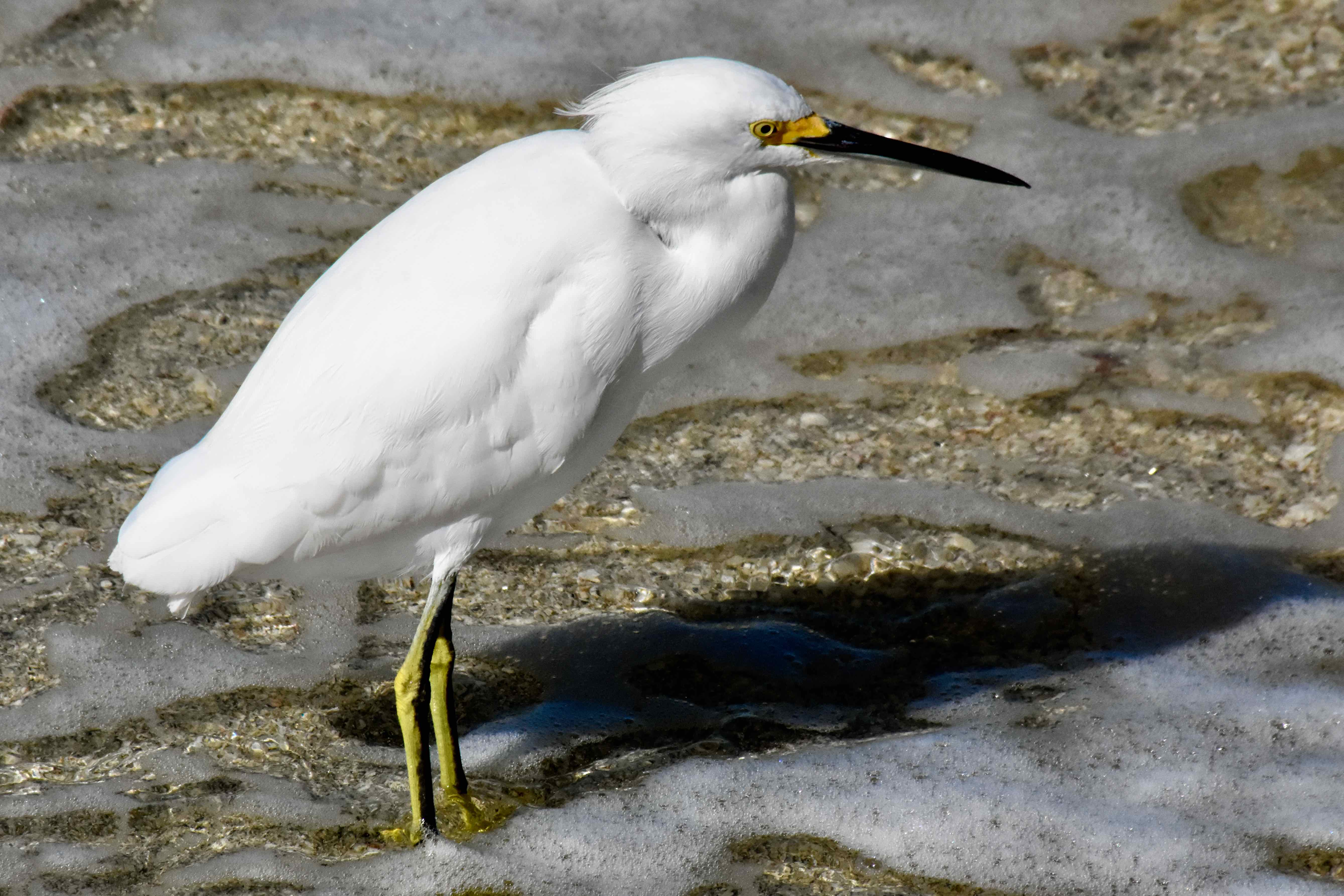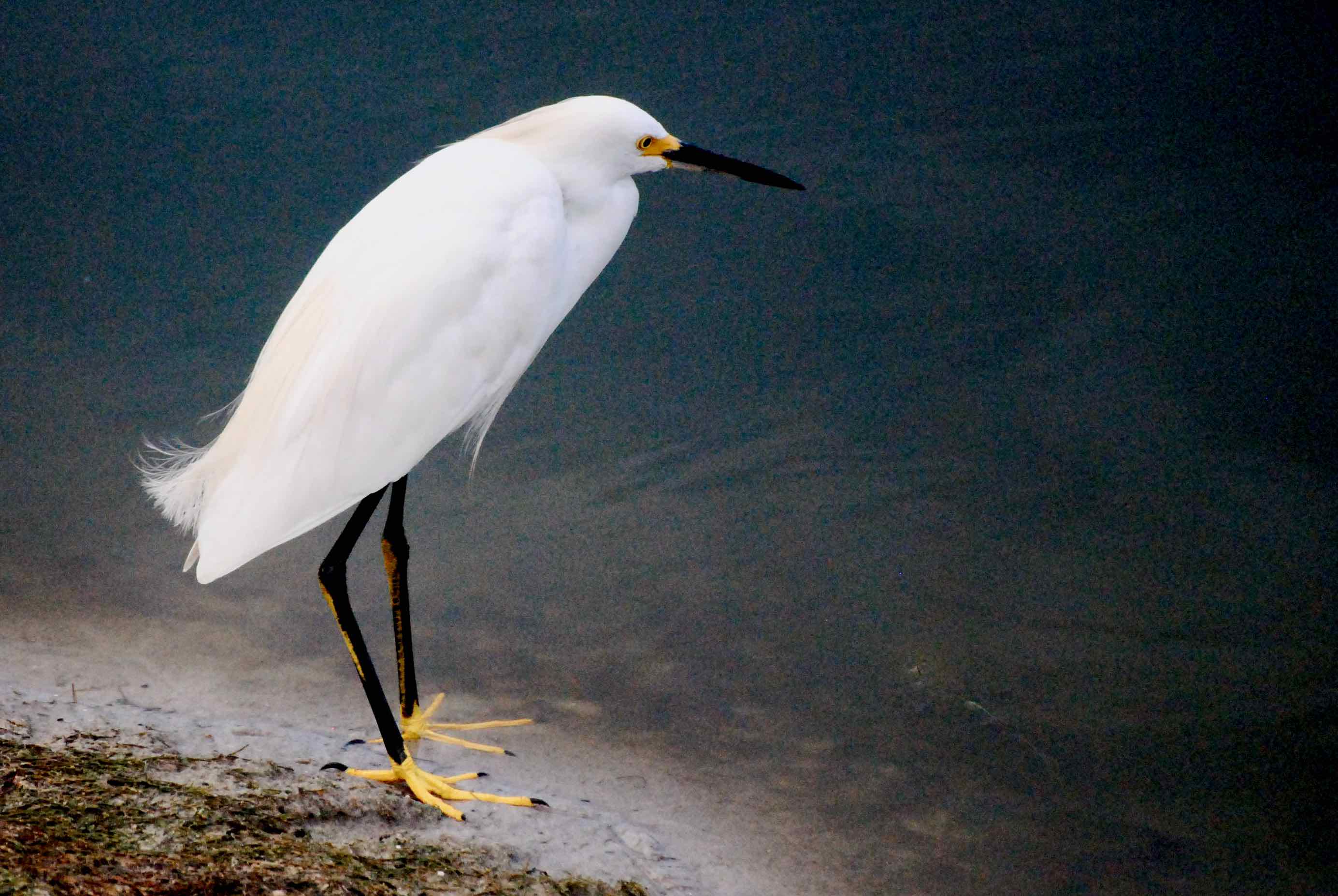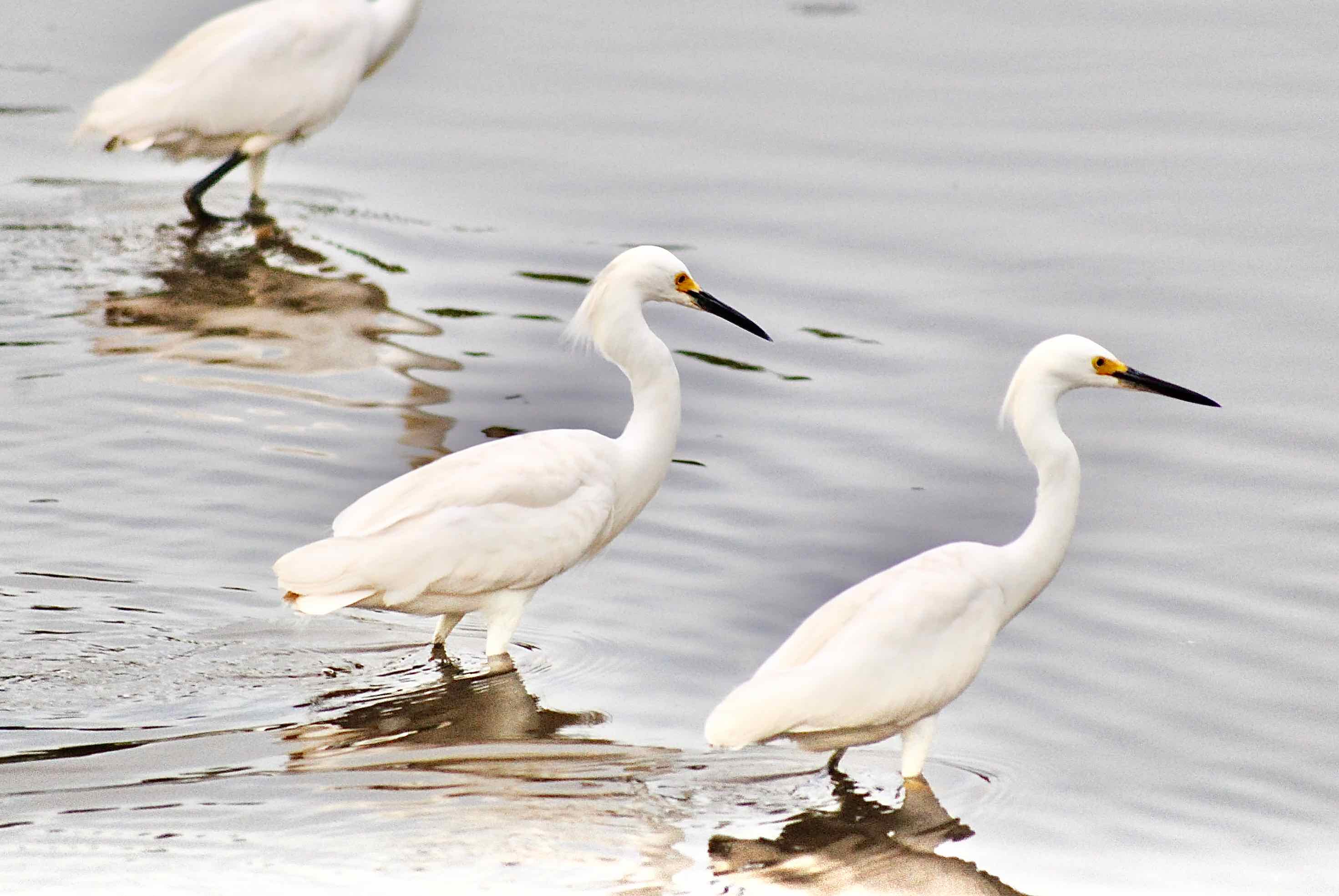
Snowy egret, photographed at Peaceful Waters Preserve, Wellington, Palm Beach County, in January 2017.
If you see a bird with pure white feathers, a black bill, black legs and extremely bright yellow feet, you’re almost certainly looking at this guy, the snowy egret, Egretta thula.
It’s a common bird around the wetlands of South Florida, where it is a year-round resident. Unmistakable, really. The bird that is closest in appearance is an immature little blue heron, which lacks the yellow feet and has a slight blue hue rather than the snowy's pure white. Immature little blues also take on a blotchy appearance as they get older until they finally turn all blue.
Snowy egrets can be found over much of the United States, but are found year-round only in the extreme Southeast and in Southern California. There are summer populations farther north along the Atlantic and Gulf coasts and in parts of the Rockies. Florida's population increases in the cooler months as migrating snowies move south to escape the cold.
They're also found year-round throughout the Caribbean, coastal Mexico and most of South America sans the Andes backbone. Mangrove forests, saltmarshes, freshwater swamps and ponds are common habitats.
They are pure white, with a school bus yellow-orange face, a black bill and of course the bright yellow feet contrasted by their black legs. Snowies display delicate white plumes called aigrettes on their heads and backs during breeding season. The feet also turn a deeper shade of yellow.
Snowies are sociable birds. They nest in remote areas in colonies and often forage together with other wading birds. So sociable that they often mate with herons and other egret species.
Breeding season in Florida begins in January and runs through August. They nest in trees or shrubs, with males starting nest construction using sticks grasses and spanish moss before selecting a mate. The chosen female will take over and do most of the remaining work.
Snowy egrets have one brood a season, each with two to six eggs. The eggs hatch after about four weeks of incubation; the young snowies are ready to fledge after three or four weeks. Both parents help feed the young, but there is a chance the last egg to hatch might starve. Although sociable birds, male snowies defend their territory within the colony.
Their menu includes fish and frogs, which they spear with their bills, crustaceans and insects. They're watch-and-wait hunters for the most part, but they also will employ more active methods as well.
Like too many other birds, snowy egrets were targets of overly aggressive hunters in the late 19th and early 20th centuries. Fashion of the day fueled demand for their feathers and severely diminished their populaton. Even after hunting in the U.S. was outlawed through the Migratory Bird Treaty Act, snowies continued to be hunted in Central and South America, the feathers shipped to Europe. Snowy egret numbers have rebounded overall, but in Florida, they're listed as a species of concern because they are wetland birds.Now the big threat to the bird is habitat loss.
Snowy egrets are members of Ardeidae, the heron family.
Click on photo for larger image
Links for Snowy Egret



